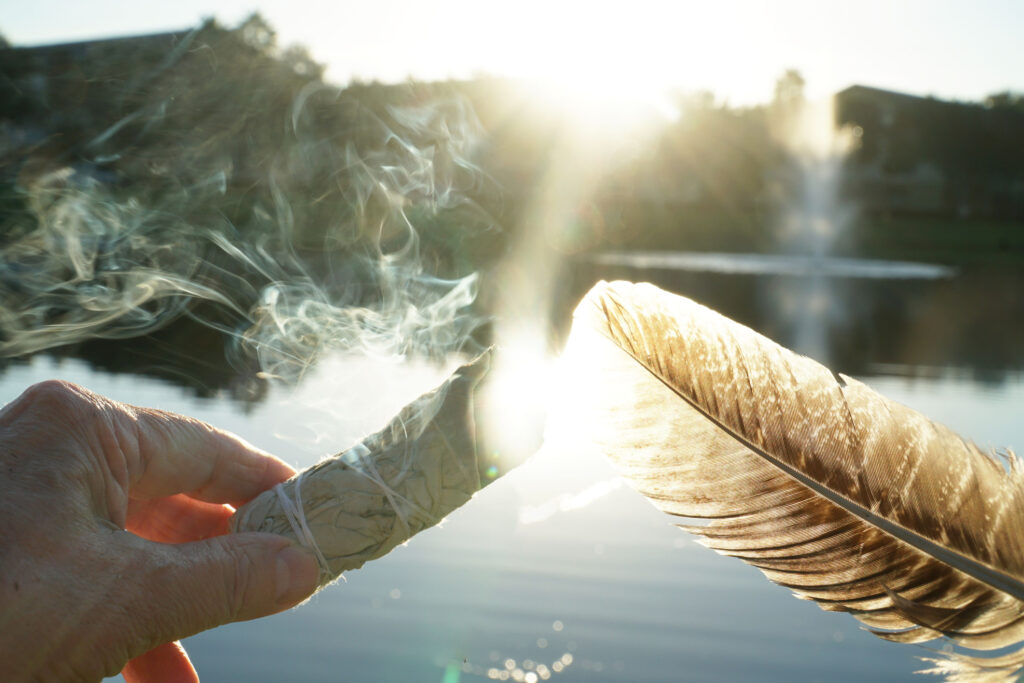“Wellness from an Indigenous perspective is a whole and healthy person expressed through a sense of balance of spirit, emotion, mind and body. Central to wellness is belief in one’s connection to language, land, beings of creation, and ancestry, supported by a caring family and environment.” — Elder Jim Dumont
August is National Wellness Month, so it seems appropriate to share some philosophies we can all live by to improve our overall health and wellbeing. But rather than give you a top 10 list of the same old advice you’ve heard before, we’re going to listen to Indigenous wisdom and borrow some of their traditions that we can all apply to our everyday lives. At Staff Shop, honouring Canada’s Indigenous Peoples is just part of our DNA. We also encourage our team to prioritize their health and wellbeing, maintaining balanced lifestyles.
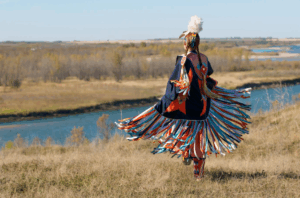
Pillars of Indigenous wellness include:
Balance of Spirit, Emotion, Mind, and Body: A person can feel whole and healthy when all of these elements are working in harmony. See here.
Connection: Connection isn’t just about connecting to other people. It’s about connecting to one’s culture, language, land and ancestors. This also means having a supportive community and family. See here.
Cultural Identity: Having a strong sense of belonging is so important to one’s overall wellness. This also means having a strong sense of self. When you feel like you have a purpose and life has meaning, you will feel so much better. See here.
Traditional Practices: Indigenous peoples use traditional practices, such as ceremonies, traditional medicines, and learning from Elders. These are essential components to their approach to health and wellness. See here.
Community and Collective Wellbeing: Indigenous wellness practices do not focus on individual achievements, but rather the collective wellbeing. There is a huge focus on community when it comes to health and wellness.
Strength-Based Approach: Rather than focussing on individual weaknesses, Indigenous peoples look at strengths, resilience, and cultural assets to guide them. See here.
The Medicine Wheel
You have probably seen the visual of the medicine wheel. There’s even a depiction of it on the famous Toronto sign in Nathan Phillips Square, in front of City Hall.
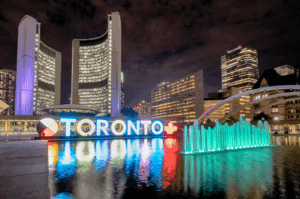
The traditional medicine wheel is used by Indigenous peoples across North America, including First Nations, Métis, and Inuit peoples. The wheel features four sections. Typical medicine wheels feature four colours (they do differ for some nations): yellow, red, black, and white.
Each section carries a different meaning, with different lessons. The meanings can vary between nations, but here is a general synopsis of some of them:
- The Four Directions
- East (Yellow): Beginnings, birth, spring, sunrise, illumination
- South (Red): Growth, youth, summer, passion, emotions
- West (Black): Reflection, adulthood, autumn, introspection, the setting sun
- North (White): Wisdom, elderhood, winter, clarity, spiritual guidance
- The Four Aspects of the Self
- Mental: thinking, learning, decision-making
- Emotional: feelings, relationships, compassion
- Physical: the body, health, the environment
- Spiritual: connection to Creator, purpose, ceremony
- The Four Stages of Life
- Infancy (East)
- Youth (South)
- Adulthood (West)
- Elderhood (North)
- The Four Elements of Nature
- Earth: grounding, nourishment
- Air: breath, communication
- Fire: transformation, energy
- Water: cleansing, emotion, intuition
Examples of Traditional Indigenous Medicine Across North America
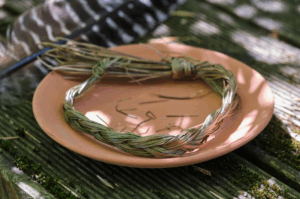
There are many practices we can learn from and borrow from our Indigenous communities.
- Medicinal Plants
- Cedar: used in purification and protection, often in tea or smudging
- Sage: burned in ceremonies to cleanse energy or spaces
- Sweetgrass: braided and burned to invite positive energy and spirits
- Tobacco: sacred offering to the Creator or land when gathering medicines
- Labrador tea: used in some northern communities for colds and stomach ailments
- Willow bark: contains salicylic acid (like aspirin), used for pain and fevers
- Smudging
Burning sacred herbs such as sage, sweetgrass, cedar, or tobacco to cleanse the body, space, or spirit. This is a spiritual purification ritual, often part of prayer, ceremony, or healing circles.
- Sweatlodge Ceremonies
A sweatlodge ceremony is a traditional healing and purification ritual using steam, heat, and prayer inside a dome-shaped lodge. It promotes physical cleansing, emotional release, and spiritual reconnection.
- Traditional Healers and Elders
Healers or “medicine people” are often community-based and have a deep knowledge of herbal remedies, ceremonies, dreams, energy, and spirit. The healing practices often include storytelling, song, prayer, and guidance.
- Drum, Song, and Dance
Music and rhythm are considered healing. Drumming is said to mimic the heartbeat of Mother Earth. Songs and dances are used in healing ceremonies, to bring strength, connection, and wellness.
- Healing Circles
Healing circles are community-based and involve gathering in a circle to speak and listen from the heart. They support emotional healing, conflict resolution, and collective support.
- Traditional Foods and Nutrition
For Indigenous peoples, food is medicine. Wild game, berries, fish, corn, beans, and squash are central to health, providing not only nutrients but cultural and spiritual nourishment.
- Dreamwork and Spiritual Guidance
Many Indigenous cultures study dreams to gain insight and provide healing. Some communities have dream interpreters or spiritual guides who help others find meaning and direction.
How Can Non-Indigenous People Take This Sacred Guidance Without Committing Cultural Appropriation?
- Build Relationships First
Indigenous medicine is rooted in community, land, and lineage.
Don’t seek out teachings or ceremonies as a “spiritual consumer.” Instead, build authentic, respectful relationships with people or communities, especially when invited into those sacred spaces.
- Seek Invitation, Not Access
Participation in ceremonies or practices, such as sweatlodges or smudging should come by invitation from a knowledge keeper, Elder, or healer, not by personal demand or online research.
- Learn From Indigenous Voices
Attend public events, workshops, or teachings led by Indigenous groups in your community. Many host open circles, educational seminars, or healing gatherings that welcome non-Indigenous participants.
- Avoid Appropriating Symbols or Practices
Do not use medicine wheels, feathers, dreamcatchers, or smudging tools in personal or spiritual practice unless you have been taught and gifted those practices by an Elder or teacher.
- Support Indigenous-led Healing and Wellness
Donate to or volunteer with Indigenous health organizations, land-based healing programs, or reconciliation initiatives.
Amplify Indigenous voices, stories, and teachings without claiming them as your own.
Hire Us To Speak
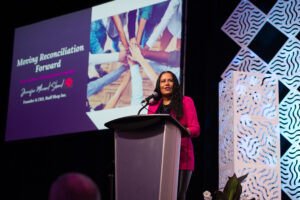
If you have a group or organization looking for a speaker for an event or educational session, consider hiring our Founder and CEO, Jennifer Ménard-Shand.
Jennifer Ménard-Shand is a grateful and humble First Nations Ojibwe and French-Canadian wife, mother, entrepreneur, and speaker who turned her dream of leading a purpose-driven organization into reality. As the Founder & CEO of Staff Shop – an award-winning, certified diverse Indigenous & Women-owned staffing, search, and consulting firm – Jennifer is on a mission to break generational curses and inspire people to dream big.
Topics of interest:
- Moving Reconciliation Forward – Healing Through Storytelling, Entrepreneurship, and Philanthropy
- Wellness, Leadership & AI – The Modern Business System: How to Integrate Wellness and Servant Leadership (Supported by Smart Use of AI) to Drive ROI, and Culture Transformation
Contact us today to get started!
“Indigenous wellness is grounded in relationship — to the land, to each other, to spirit, and to self.” — Dr. Nadine Caron (First Nations surgeon and scholar)

